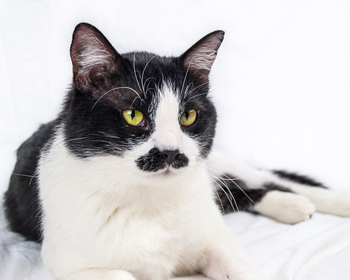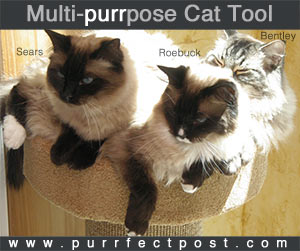Flame Retardants and Hyperthyroidism in Cats

Hyperthyroidism is a common disease diagnosed in cats. It's a disruption of the thyroid gland that results in overproduction of the hormones T3 and T4. The result is an increased metabolism which can cause damage to the heart and other organs over time. You can learn more here: "Hyperthyroidism in Cats."
What Causes Feline Hyperthyroidism?
Hyperthyroidism was first documented in cats in the 1970s, and since then, cases have continued to rise dramatically. Scientists have been busy trying to determine the cause of the disease, and while they haven't come to a conclusion, they are getting closer.
Veterinarians and scientists believe that the most likely cause of hyperthyroidism is either a nutritional deficiency or excess or exposure to environmental compounds (Peterson, 2012).
The biggest suspect for a dietary cause of feline hyperthyroidism is iodine. The recommended amount of iodine in cat food changed in the 1970s, and less iodine has generally present in cat foods since then.
Hyperthyroidism in cats resembles a disease which occurs in older humans in iodine deficient areas, and some studies have found higher rates of hyperthyroidism in cats fed low iodine diets.
Ingesting too much iodine is also known to disrupt thyroid function.
Some of the environmental contaminants that have been implicated as potentially being involved in triggering the development of feline hyperthyroidism include:
- BPA, an epoxy resin used to line some metal cans, such as pop-up canned cat food cans.
- PBDEs, which are compounds used as flame retardants in furniture, carpet, bedding, electronics, and clothing.
- PCB, a pesticide that was banned in the US in the 1970s but is still used elsewhere in the world and is present in ocean waters.
PBDEs: Flame Retardants and Hyperthyroidism in Cats
PBDEs are used as flame retardants in the US in many items. They have been banned in some other countries.
Because they are so widely used, PBDE levels can be quite high in household dust. Cats, being fastidious groomers, probably ingest a significant amount of household dust.
Various studies have shown a link between PBDEs and hyperthyroidism in cats. Cats have been found to metabolize PBDEs more slowly than humans or dogs, allowing the compounds more time in the body to potentially disrupt thyroid function.
What Can You Do?
While scientists continue to work toward nailing down the exact cause of feline hyperthyroidism, it's a good idea to keep all of the potentials in mind. After all, the cause may well be a combination of things. Here are some tips to keep in mind to do what you can to avoid hyperthyroidism in your cat. Remember, doing all of these things does not guarantee that your cat won't develop hyperthyroidism.
- Limit the amount of fish and fish-flavored cat food that your cat eats. Learn more here: "Fishy Food and Feline Hyperthyroidism."
- Try to use BPA-free cat food cans. You may need to contact the company to find out whether BPA is used to line their cans.
- Use a water filter. Filter your home's tap water before you give it to your cat. This can remove some of the thyroid-disrupting compounds that may be present. Alternatively, you can use a cat drinking fountain that contains a filter.
- Use a vacuum with a HEPA filter. These are better at removing small dust particles and, potentially, PBDEs from your home.
- Ask when you buy new items. Ask the manufacturer about whether flame retardants are present in new items when you buy them.
- Consider a whole house air purifier. An air purifier with a HEPA filter may help remove PBDEs from the air in your home.
Works Cited
- Peterson, M. (2012, Nov.). Hyperthyroidism in Cats: What's causing this epidemic of thyroid disease and can we prevent it? Retrieved from Journal of Feline Medicine and Surgery: DOI: 10.1177/1098612X12464462.
You May Also Like These Articles:
Ethoxyquin, Mercury, and PCBs: Is Feeding Fish Safe for Cats?
Human Medications That Are Dangerous to Cats
Top 10 Cat Toxins of 2014 - Slideshow
Sago Palms Can Be Lethal to Cats
Warning: Topical Medications Containing Flurbiprofen May Be Dangerous to Cats
Notice: Ask-a-Vet is an affiliated service for those who wish to speak with a veterinary professional about their pet's specific condition. Initially, a bot will ask questions to determine the general nature of your concern. Then, you will be transferred to a human. There is a charge for the service if you choose to connect to a veterinarian. Ask-a-Vet is not manned by the staff or owners of CatHealth.com, and the advice given should not delay or replace a visit to your veterinarian.





